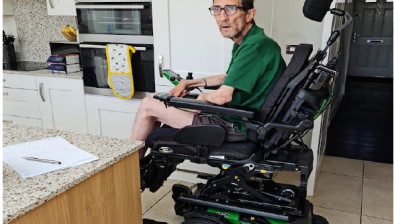Historic Scotland announces £6.4 million investment to regenerate Scottish towns

Communities from Aberdeenshire to Argyll and Bute will benefit from over £6.4 million of funding, as part of Historic Scotland’s Conservation Area Regeneration Scheme.
The money was awarded in round six of the funding initiative, which has seen over £33 million invested by the Scottish Government Agency since 2007, to the benefit of more than 50 projects across the country.
The latest recipients are Fraserburgh, New Lanark, Strathaven, Coatbridge, Tranent, Millport, and Campbeltown, who will receive the funding over five years.
Previous recipients have used the money to restore their town centres and high streets, brought vacant or ‘at risk’ buildings back into reuse, helped out homeowners with small grants schemes, and provided training opportunities in traditional skills and education programmes.
As well as investing in built heritage the overall intention of the scheme is to enable wider economic and social regeneration for communities throughout Scotland.
Fiona Hyslop, Cabinet Secretary for Culture, Europe and External Affairs, said: “We’ve invested over £33 million through CARS since 2007, helping towns and cities across Scotland improve and conserve their built environment.
“Scotland’s historic towns and communities comes in all shapes and sizes, from former mining towns like Tranent in East Lothian, to historic ports like Fraserburgh in Aberdeenshire, or market towns like Strathaven in South Lanarkshire.
“The Scottish Government is committed to investing in regeneration projects across the country and enabling people to improve their local area and look after their heritage, which is one of the priorities of the Historic Environment Strategy for Scotland: Our Place in Time.”
“Funding from the CARS scheme often acts as a catalyst for additional investment in a town or project from additional funders. I look forward to hearing the impact the scheme has on all of today’s recipients in the coming months and years.”
CARS targets conservation areas with social and economic disadvantages that make it difficult to attract investment in sustainable regeneration. The scheme assists these areas by channelling funding towards opportunities to enhance sustainable economic growth and help support projects that develop an area’s sense of place.
Jane Ryder, the newly appointed Chair of Historic Environment Scotland, said: “In 2014 a ten-year strategy for Scotland’s historic environment was created, with one of its founding ideas being that the historic environment is owned by the people of Scotland, and not by the Government, so we should do everything in our power to enable the people to look after this environment.
“Another key objective of the strategy was to put the conditions in place which allow our heritage to make as strong a contribution as possible to the cultural, social, environmental and economic value of Scotland.
“The CARS scheme helps to achieve both of these objectives and will play a significant role in moving towards the vision outlined in the strategy.”
Historic Environment Scotland is a new public body for the Historic Environment, which comes into effect in October 2015, replacing Historic Scotland and the Royal Commission on Ancient and Historic Monuments Scotland (RCAHMS).
Each round of CARS funding is open to local and national park authorities, community groups and other third sector organisations delivering multi-funded projects. The funding can be used for a number of purposes from priority repairs and small grants to homeowners and retailers, to providing traditional craft training opportunities.
Recipients of round six of CARS include:





















